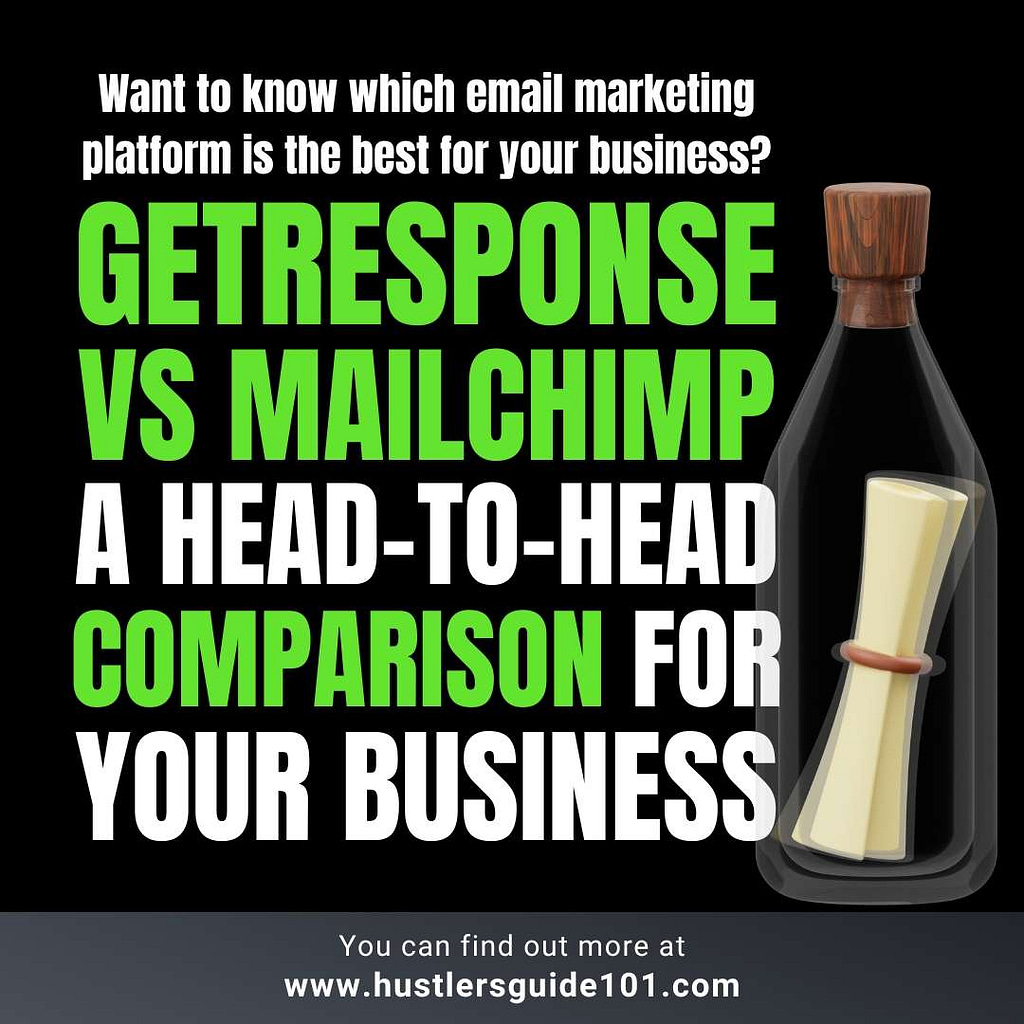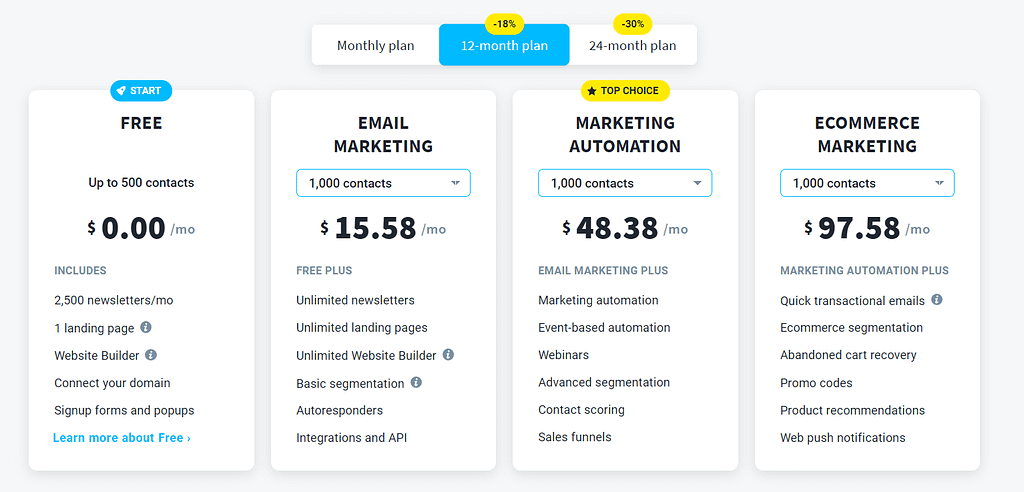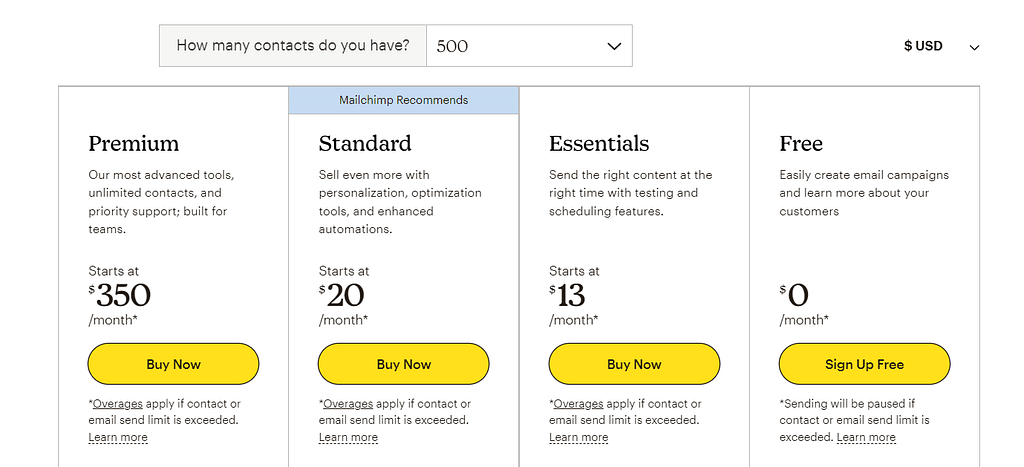
Wondering about what secrets GetResponse VS Mailchimp are hiding? Email marketing is a vital tool for businesses of all sizes. But with so many options available, it can be overwhelming to choose the right platform.
As a freelancer or small business owner, you want a platform that is user-friendly and easy to use, yet still offers advanced automation and reporting capabilities. You also want one that can help you connect with your clients and grow your business. The problem is, finding the perfect platform that meets all of these needs can be a daunting task.
But fear not! In this blog post, we’ll take a deep dive into two of the most popular email marketing platforms. GetResponse VS Mailchimp. Compare their key features and pricing plans. We’ll identify the problem of choosing the right email marketing platform for your business and give you a solution by helping you make an informed decision about GetResponse VS Mailchimp.
How I discovered and analyzed GetResponse VS Mailchimp for my freelance business?
As a freelancer, I was on the hunt for the perfect email marketing platform to take my business to new heights. I came across Mailchimp and was initially excited by its user-friendly interface.
But as I delved deeper, I realized it just didn’t have the automation and reporting capabilities I needed. That’s when I discovered GetResponse and my world changed! The advanced automation and reporting features, coupled with its list management and segmentation options, made it the perfect fit for my business.
I switched to GetResponse and my clients were impressed by the professional and visually appealing emails. The best part? I could track my progress and make data-driven decisions thanks to in-depth reporting and analytics.
If you’re a freelancer like me, I highly recommend giving GetResponse a try, it just might be the game-changer you’ve been looking for.

Want to know how GetResponse works and what features it can offer for your business? Read in detail here.
The Great Debate: GetResponse VS Mailchimp
When it comes to email marketing, it’s essential to choose the right platform that meets your specific needs and helps you to grow your business. GetResponse and Mailchimp are two of the most popular email marketing platforms. Each with its own set of features and pricing plans.
Let’s take a look at how these two platforms differ from each other and can help you with your business growth.
Email Creation and Design Tools
Both GetResponse and Mailchimp offer a wide range of email creation and design tools. Allowing you to create professional and visually appealing emails that will grab your audience’s attention. However, GetResponse offers a more advanced drag-and-drop editor that allows for more customization options. On the other hand, Mailchimp has a simpler and more intuitive editor that is easy to use for beginners.
Automation and Trigger-Based Emails
When it comes to automation and trigger-based emails, GetResponse has a more robust system in place. With GetResponse, you can set up automated workflows that trigger specific actions based on subscriber behavior, such as sending a follow-up email after someone makes a purchase. Mailchimp’s automation capabilities are not as advanced, but it still allows you to set up basic automation such as welcome emails and abandoned cart emails.
Check out some project management tools here to level up your team productivity and automation.
List Management and Segmentation
When it comes to listing management and segmentation, both GetResponse and Mailchimp offer similar capabilities. Both platforms allow you to segment your audience based on demographics, behavior, and engagement, making it easy to send targeted and personalized emails.
However, GetResponse has a more advanced system in place that allows you to create custom fields and tags, giving you even more flexibility and precision when segmenting your audience.
Reporting and Analytics
Both GetResponse and Mailchimp offer comprehensive reporting and analytics, so you can track the performance of your emails and make data-driven decisions. However, GetResponse’s reporting is more in-depth and includes more metrics such as conversion rate, revenue generated, and customer lifetime value.
Integrations
When it comes to integrations, both GetResponse and Mailchimp offer a wide range of third-party integrations, including popular e-commerce platforms like Shopify, WooCommerce, and Magento, as well as social media platforms like Facebook and Instagram.
Pricing
When it comes to pricing, both GetResponse and Mailchimp offer a range of pricing plans to suit different needs and budgets. GetResponse’s pricing starts at $15.58 per month for their Basic plan, which includes all of the core features and allows you to send emails to up to 1,000 subscribers.

Mailchimp’s pricing starts at $13 per month for their Essentials plan, which includes all of the core features and allows you to send emails to up to 500 subscribers. Both platforms offer higher-tier plans with more advanced features and the ability to send emails to more subscribers, with GetResponse’s highest plan being $450/month and Mailchimp’s being $2999/month.

User Reviews
When it comes to user reviews, both GetResponse and Mailchimp have a solid reputation among users. GetResponse is often praised for its advanced automation and reporting features. While Mailchimp is often praised for its user-friendly interface and ease of use.
However, some users have complained that GetResponse’s pricing can be a little steep. Some users also complained that Mailchimp’s automation is limited and that their deliverability rate is not as good as GetResponse.
Wondering what other tools you can compare GetResponse to? Read here: GetResponse VS ClickFunnels and GetResponse VS ConvertKit.
GetResponse VS Mailchimp: Hot FAQs
What are the key differences between GetResponse and Mailchimp?
GetResponse offers more advanced automation and reporting capabilities, while Mailchimp is known for its user-friendly interface and ease of use. GetResponse also has more advanced list management and segmentation options. While Mailchimp offers a simpler and more intuitive editor for email creation and design.
Which platform is better for small businesses?
GetResponse is more cost-effective and offers advanced automation features, making it a great option for small businesses.
Does GetResponse or Mailchimp offer more integrations?
Both GetResponse and Mailchimp offer a wide range of third-party integrations. But it’s always worth checking if the specific integration you need is available.
What is the pricing difference between GetResponse and Mailchimp?
GetResponse’s pricing starts at $15 per month, while Mailchimp’s pricing starts at $9.99 per month. Both platforms offer higher-tier plans with more advanced features and the ability to send emails to more subscribers.
Can I try out GetResponse and Mailchimp before making a decision?
Yes, both GetResponse and Mailchimp offer free trials. You can try out the platform and see which one works better for you before making a decision.
Is there a money-back guarantee for GetResponse or Mailchimp?
GetResponse and Mailchimp both offer a money-back guarantee. You can try out the platform and see which one works better for you before making a decision.
Before you go
The email marketing platform you choose can make or break your business. GetResponse and Mailchimp are both great options, but they cater to different needs and audiences. Mailchimp is known for its user-friendly interface and ease of use.
Making it a great option for beginners or small businesses. On the other hand, GetResponse is the perfect fit for businesses that need advanced automation and reporting capabilities, as well as more advanced list management and segmentation options.
In the end, it’s all about finding the platform that meets your specific needs and helps you to grow your business. We hope that this comparison of GetResponse VS Mailchimp has helped you to make an informed decision.
So, whether you’re a small business looking for a cost-effective solution or a larger business in need of a more robust platform, GetResponse and Mailchimp are both worth considering. Don’t forget to try out their free trials and see which one works best for you before making a decision.







